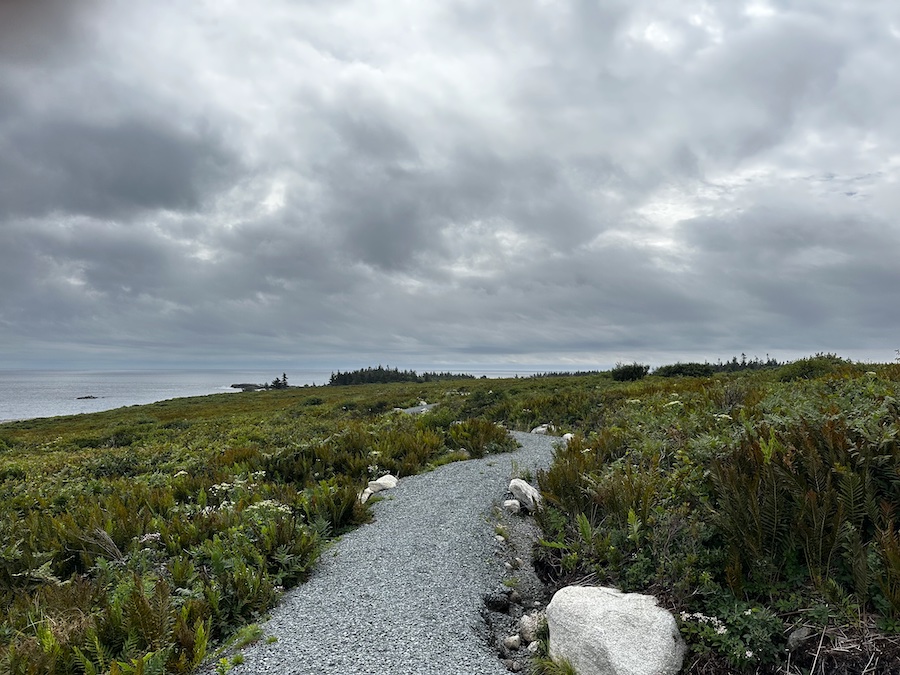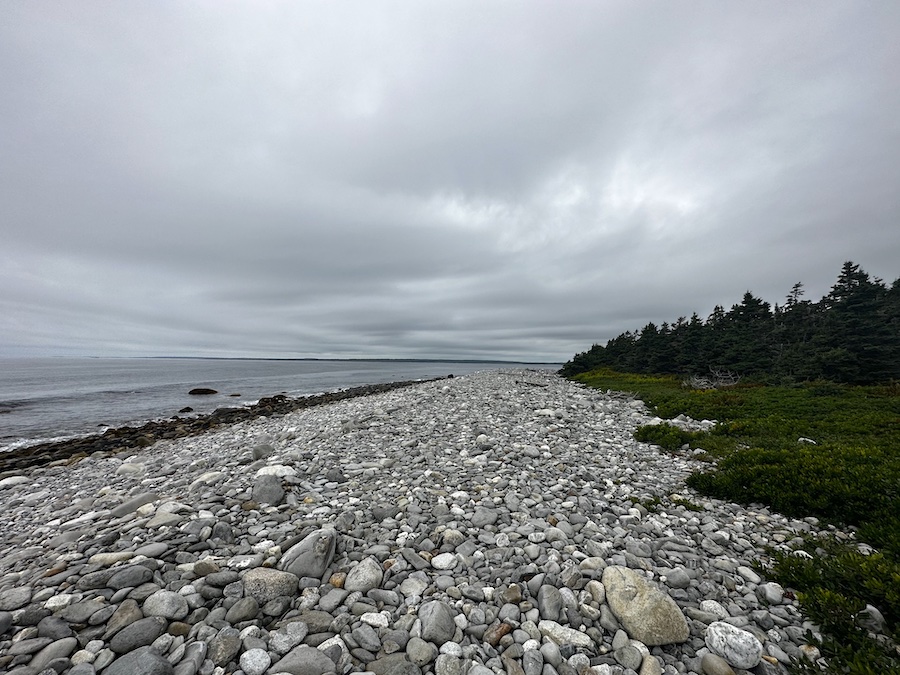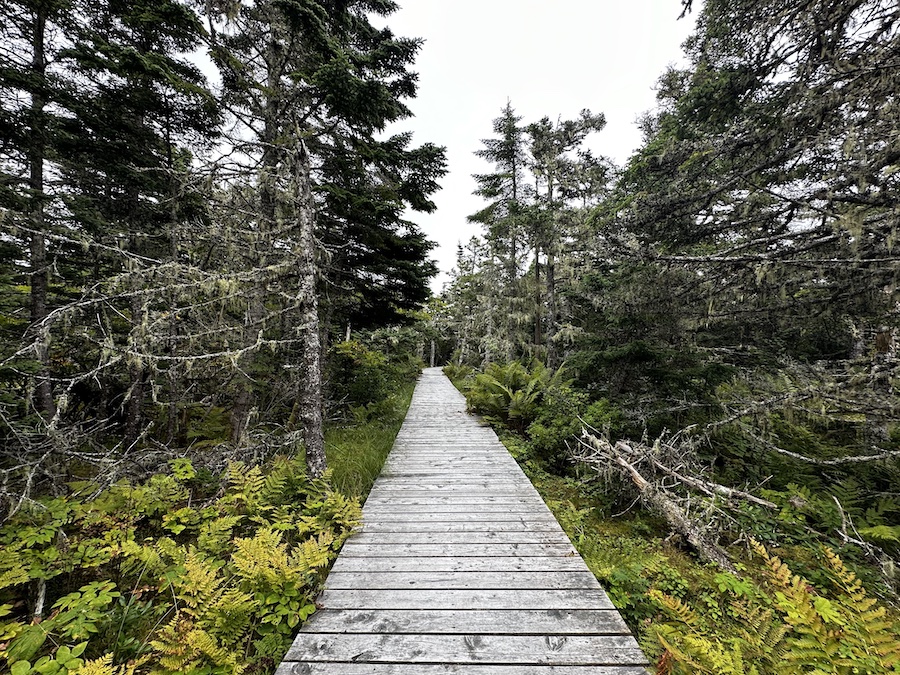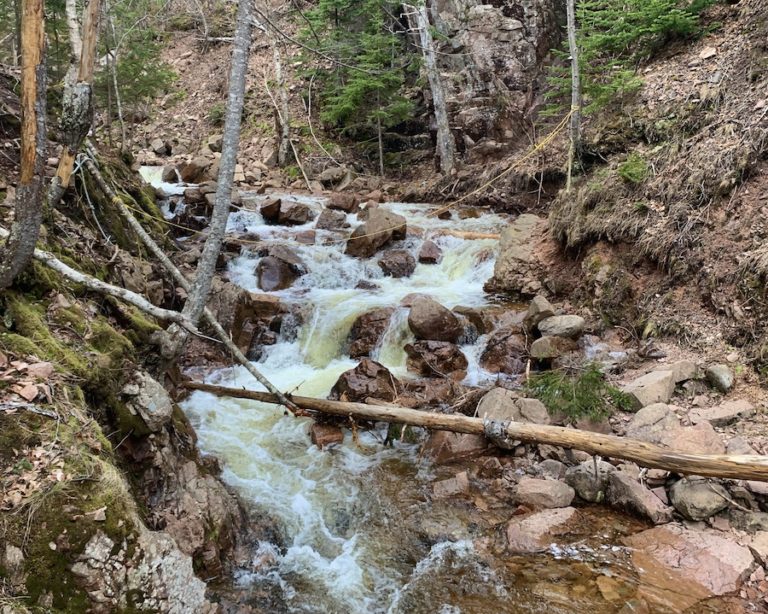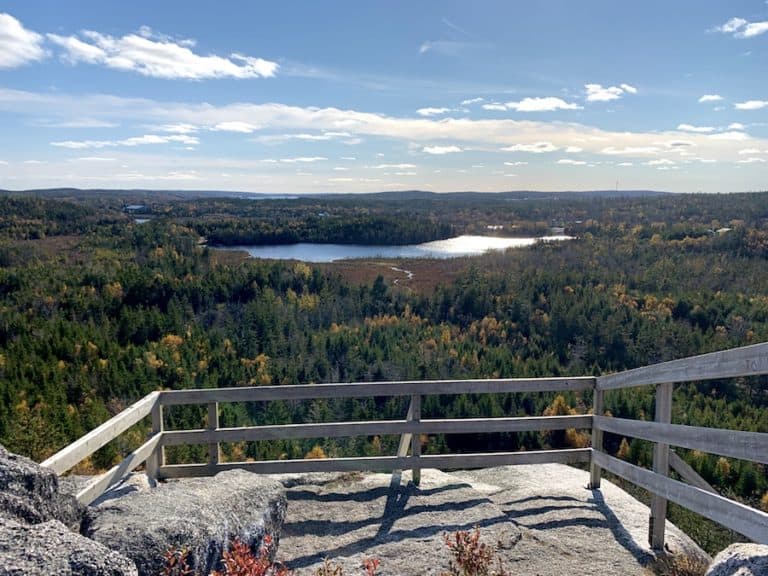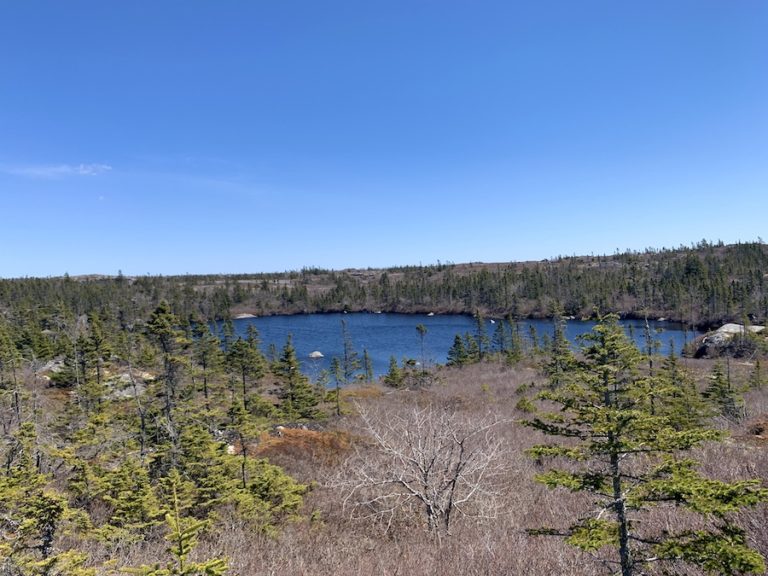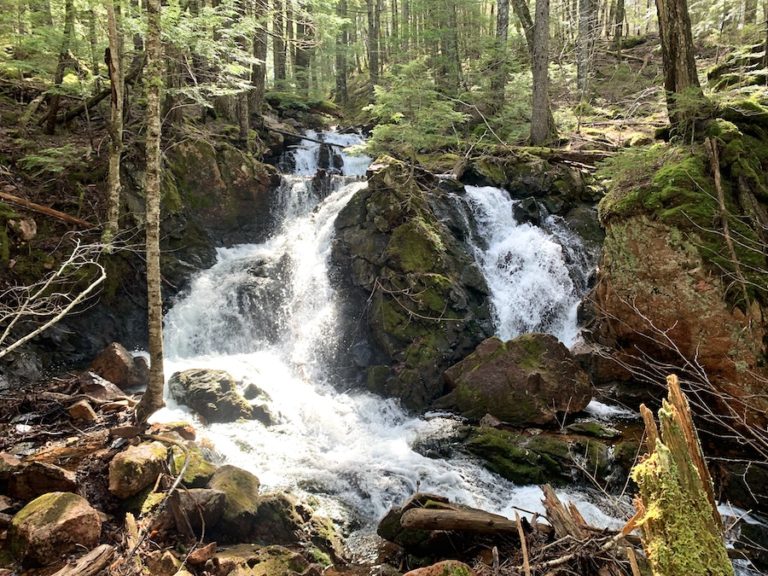Hiking Port Joli Head Trail In Kejimkujik Seaside
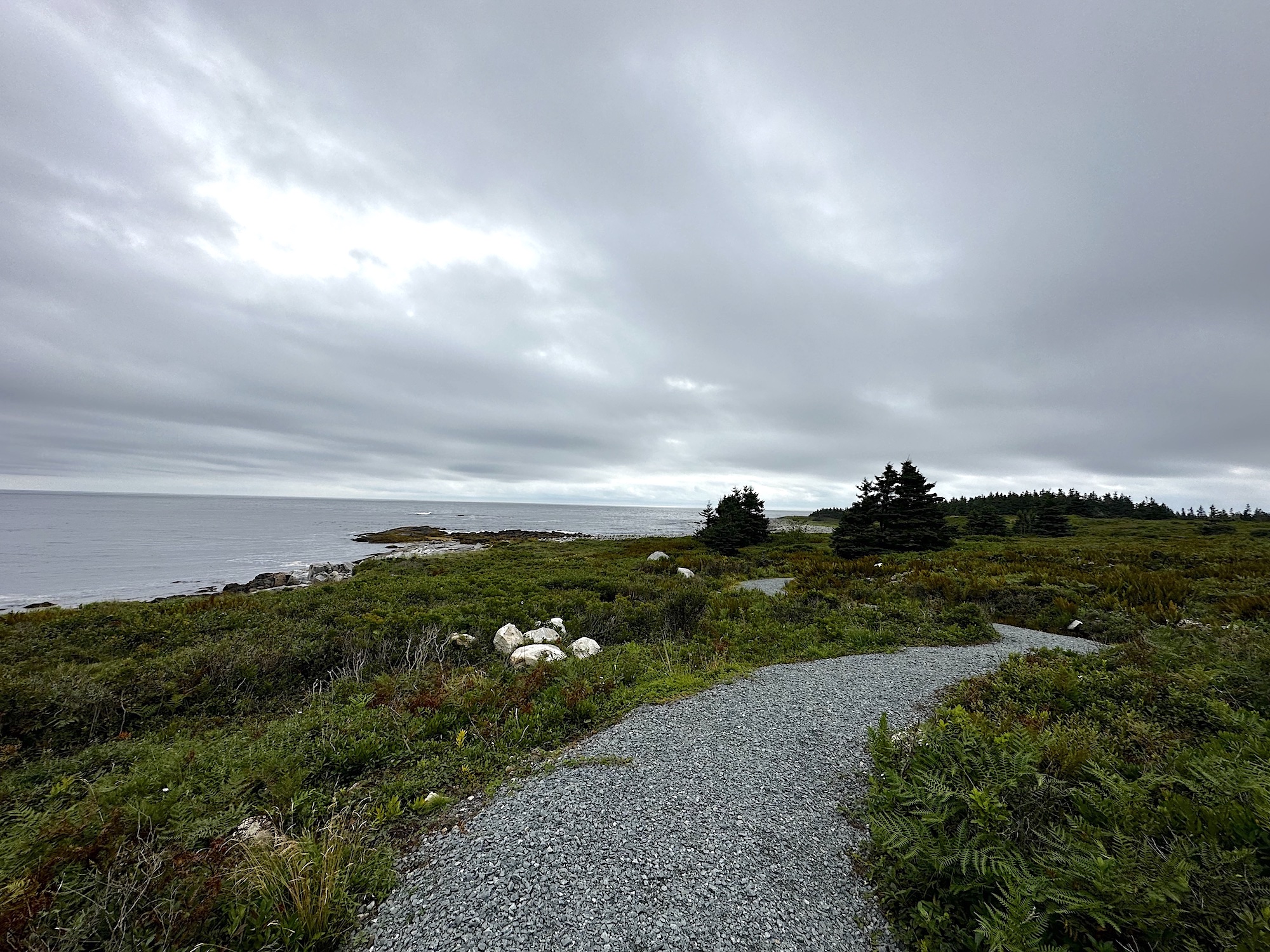
Port Joli Head trail is a loop hike located in Kejimkujik National Park (Seaside Unit), around an hour away from Kejimkujik National Park and National Historic Site. This is the longest of two hikes located at Kejimkujik Seaside.
This trail offers a range of terrains, viewpoints, and a bit of history, with the foundation of Cameron House located right beside the trail. Kejimkujik Seaside is a year-round park, making it the perfect spot for various activities such as birdwatching, wildlife sightings, hiking, and snowshoeing in the winter.
Difficulty: Easy to Moderate
Length: 4.4 km (one way)
Suggested Duration: 1.5 to 2 hours
Signage: Great signage and maps throughout
Facilities: Parking, restrooms
Disclaimer: This article includes affiliate links. If you click one of them, we may receive a small percentage of the sale at no extra cost to you. Thank you for your support!
Key Features Of Port Joli Head Trail
- Located in Kejimkujik National Park (Seaside)
- Views of Isaacs Harbour, Burgess Rock, MacLeods Cove, Cameron House Foundation, Port Joli Head and Boyds Cove
- Connects to Harbour Rocks trail
- Dog-friendly (on-leash)
- Abundance of wildlife and birdwatching opportunities
- Well-marked and maintained trail with interpretive signs
- Great snowshoeing trail in the winter
- Opportunity to explore the historic Joli Head area
Facilities And Services
- Parking lot
- Restrooms before and on the first half of the trail
- Look-off points
- Garbage Bins
- Picnic shelter at the beginning of the trail
Before You Start Hiking Port Joli Head Trail
There are a few things you should know before you begin hiking Kejimkujik Seaside. First, this is a day-use-only park, and camping is prohibited. There are nearby campgrounds available if you choose to stay in the area. The park is open year-round with free admission. To access the Port Joli Head loop, you will first start at the park entrance, the same as you would the Harbour Rocks Trail. Around 1.3km, the first entrance to the Port Joli Head loop will be on the right-hand side.
The area is not patrolled, so you should be ready for any emergency or animal encounter. It is common for hikers to come across large wildlife, such as bears, moose, and coyotes, on both the Harbour Rocks and Port Joli Head trails.
Carrying a bear bell with you while hiking is a good idea as it helps to alert wildlife that you are in the area and may scare them away if they are on the trail. It is also recommended to carry bear spray as a last resort in case of an emergency situation. Although we hope never to have to use it, carrying bear spray with you can give you peace of mind, knowing that you are prepared for any unforeseen circumstances.
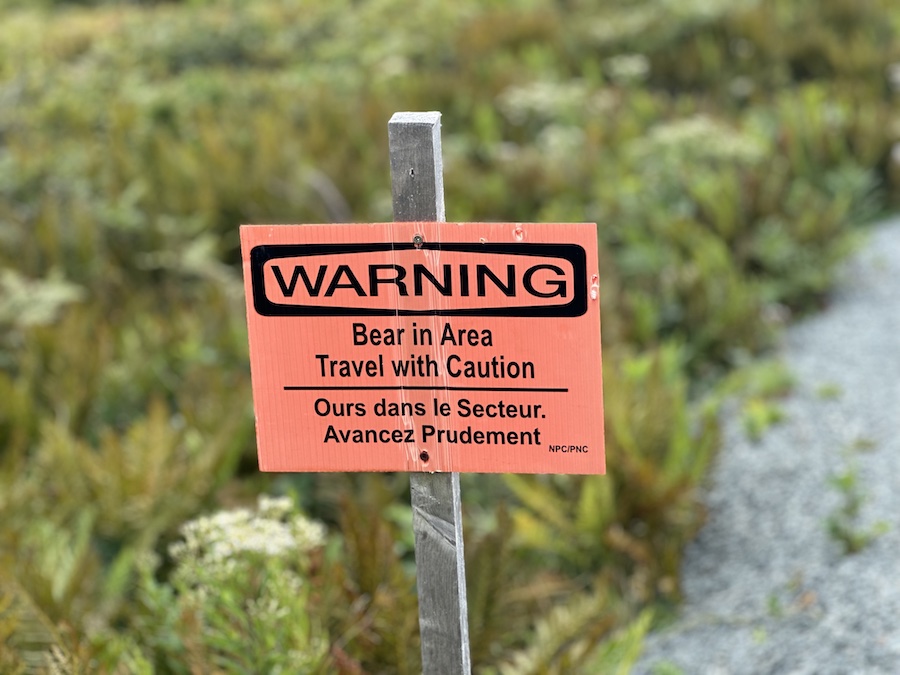
Ticks are becoming an increasingly concerning issue in Nova Scotia. Ticks that carry Lyme disease have been found in the area. Therefore, it is recommended to thoroughly check yourself and your dogs for ticks after hiking. In case you go through tall grass or bush, it is advisable to wipe yourself off. This can help remove any ticks that haven’t latched onto your skin yet.
Additionally, we always encourage hikers to carry a tick removal tool with them as a precautionary measure. Most of them can be clipped to your keys or bag. We don’t go on any trails without our Atlantick Tick Kit and Atlantick Spray, which help to repel ticks. Atlantick is made in Nova Scotia and is safe for both humans and dogs.
Along with ticks, mosquitos and black flies are to be expected along the trail. Bringing insect repellant is encouraged. Additionally, proper sun protection is a must on the trail, including hats, sunglasses, and sunscreen, as there is little to no shade, and you will be hiking in direct sunlight.
Whenever you venture out into nature, it’s important to abide by the Leave No Trace Principles. Make sure to take out all the things you brought with you and avoid littering or leaving any garbage behind on the trails. Feeding wildlife is not recommended, as it could lure animals onto the trails and put you and other hikers in danger.
Last but not least, be mindful of sudden temperature changes, weather fluctuations, and potential coastal hazards such as rip currents, slippery rocks, unpredictable waves, and storm surges.
Our Experience Hiking Port Joli Head Trail
The beginning of the Port Joli Head trail is exactly the same as the Harbour Rocks trail located near the parking lot. Since this was our first time at Kejimkujik Seaside, we decided we were going to complete both trails. We started by hiking the Harbour Rocks trail, which is an in-and-out hike (click here to read more about the Harbour Rocks trail).
The first half of the trail is along groomed crushed gravel and is surrounded by high bushes and coastal forests. Around 1.3km into this trail, we approached the first entrance to the Port Joli Head loop. Since we were completing the Harbour Rocks trail first, we chose to continue onward. The second entrance is at the split of just before Harbour Rocks Beach. If you follow to the left, you will continue onto the Harbour Rocks trail, whereas the right is to Port Joli Head Trail.
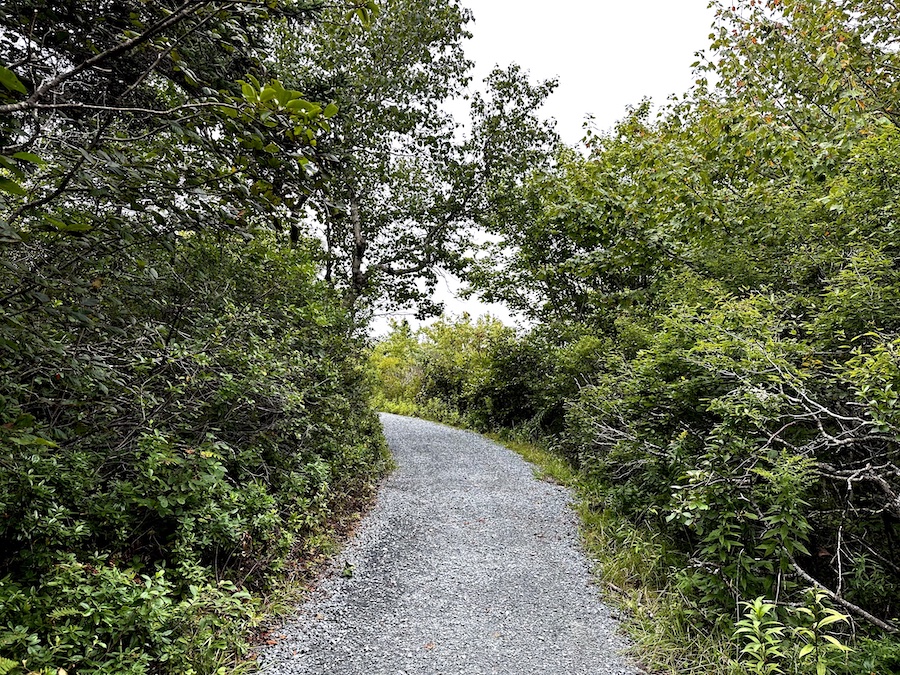
Here is a photo of the map, where you can see the two entrance points.
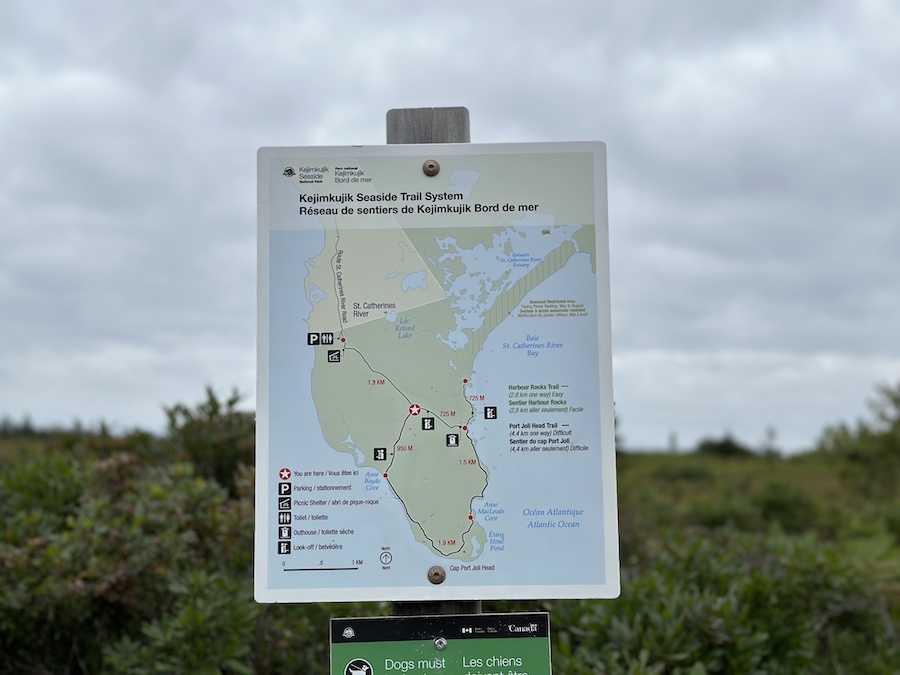
After completing the Harbour Rocks trail, we returned to where the split was before Harbour Rocks Beach and continued onto the Port Joli Head loop.
After only a few minutes on the Port Joli Head trail, we saw a warning sign indicating that there was a bear in the area and to proceed with caution. We were on high alert after this, making sure to be loud and keeping an eye out for any bears in the distance. While we did not see any bears, we did see a ton of bear scat along the trail.
The trail provides numerous breathtaking views of the ocean and the forest. Additionally, there is a brief section where you will need to walk along a rocky beach; however, this section is relatively short and will only last for a few minutes before you return to the forest.
Here are some photos showcasing the different terrains along the Port Joli Head trail.
During our hike, we came across the Cameron House foundation, which is the remnants of the home that belonged to Hugh Cameron. He was a shepherd responsible for looking after a flock of 1000 sheep at the St. Catherines River Farm. Kejimkujik has installed an interpretive sign in the vicinity to offer insights into the history of the land, and we highly recommend taking the time to read it.
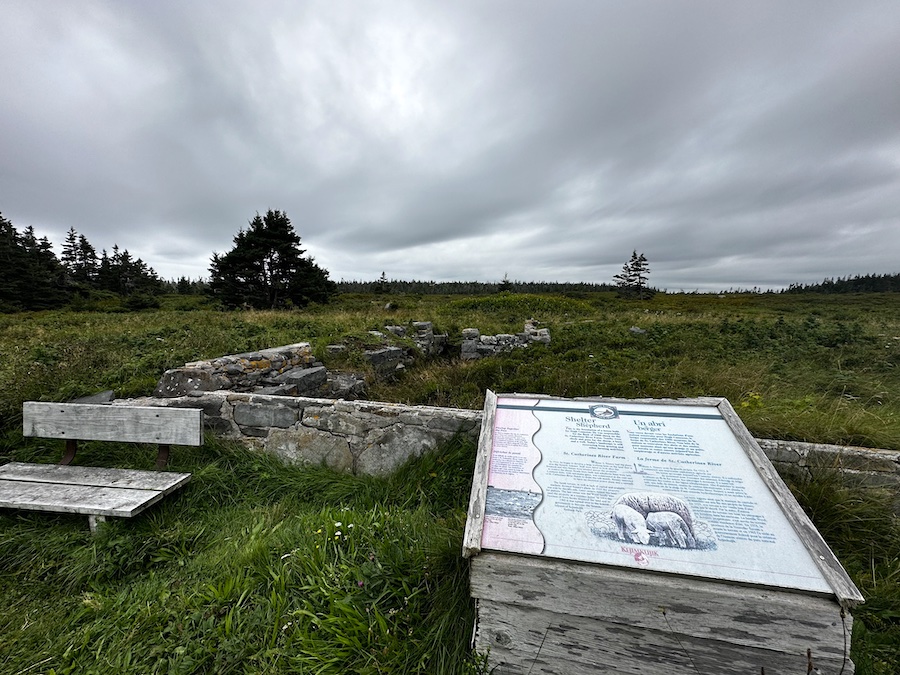
Closer to the end of our hike (or beginning, depending on which way you choose to start the hike), one of the lookouts had a stationary telescope, where you could get a closer look at the beautiful views this hike has to offer.
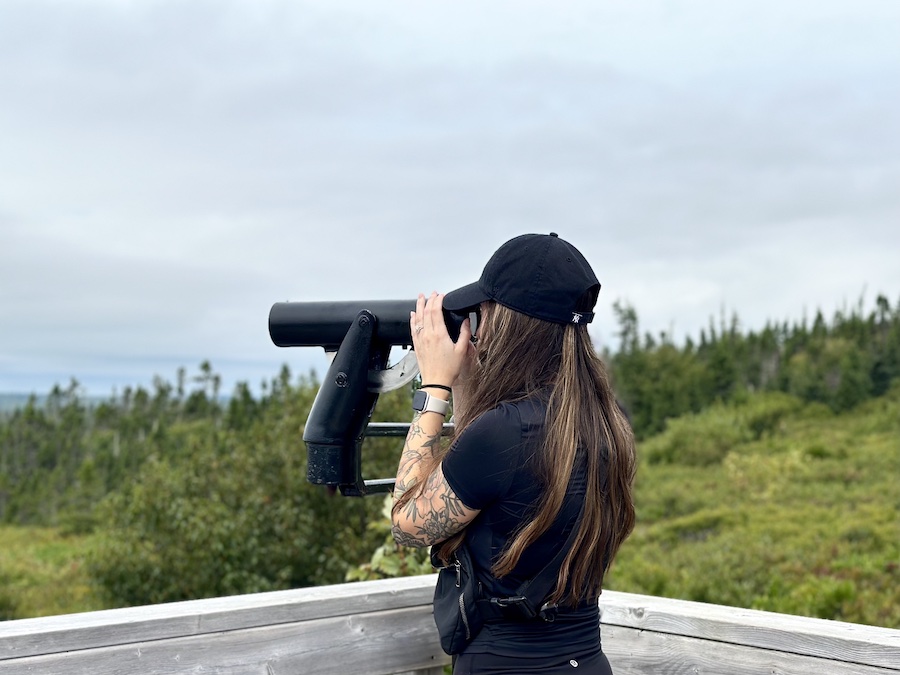
On our way back, we passed by numerous groups of people who were ready to enjoy the trails. We were happy we came early to avoid the crowds and have the trails practically to ourselves. If you want to avoid larger groups, we suggest going before noon.
All in all, this was a fun and informative hike!
Checklists And Recommended Gear
For a safe and enjoyable hike on the Port Joli Head trail, we recommend the following gear.
- Water bottle
- Hiking or comfortable walking shoes – Women’s // Men’s
- Camera/Phone to take photos
- Sunscreen
- Hat
- Insect repellent
- Cascade hiking poles
- Atlantick tick removal tool kit
- Bear bell
- Bear spray
Related Hikes
Other Hikes At Kejimkujik Seaside
Hikes At Kejimkujik National Park and National Historic Site Hikes
- Flowing Waters Trail
- Mersey River Trail
- Hemlocks and Hardwoods Trail
- Farmlands Trail
- Rogers Brook Trail
- Grafton Woods Trail
- Channel Lake Loop (multi-day hike)
- Liberty Lake Loop (multi-day hike)

